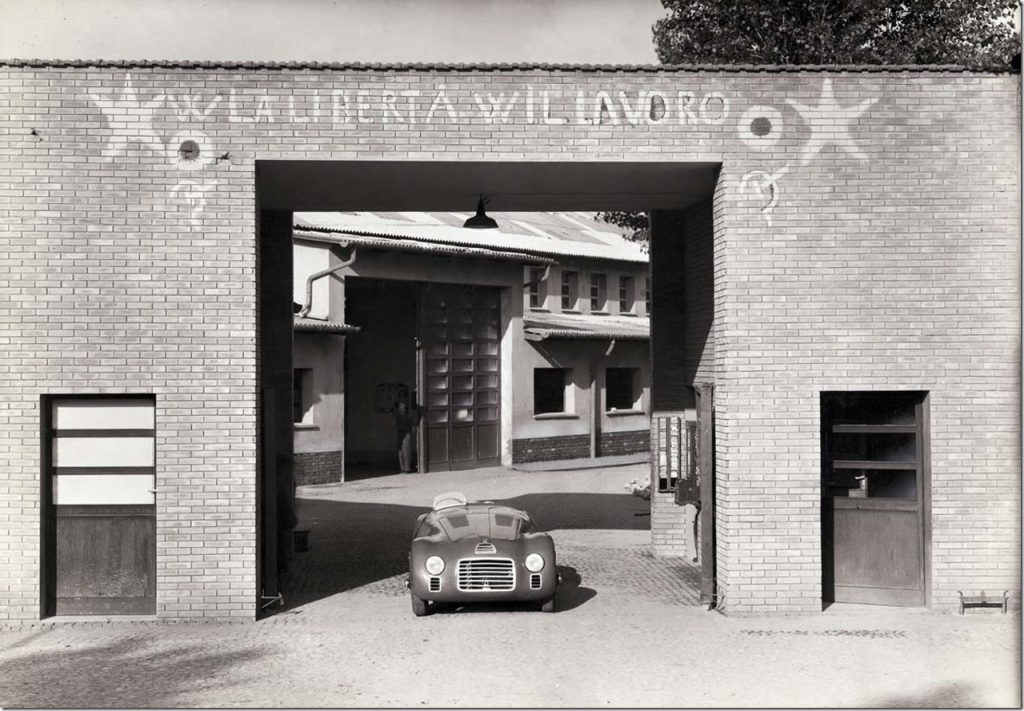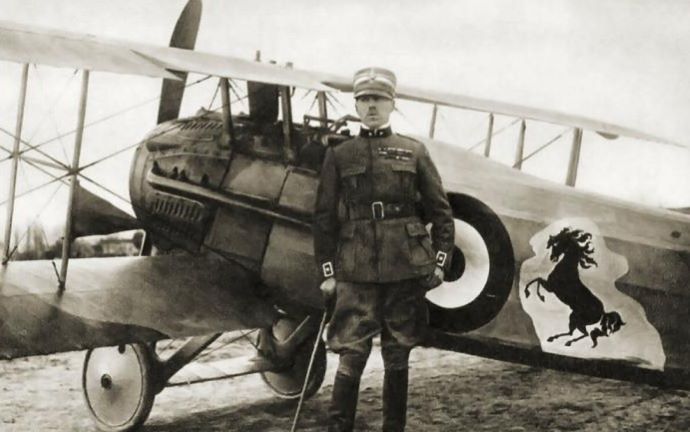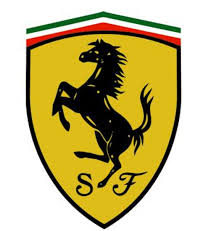
The company’s story officially began in 1947 when the first Ferrari emerged from the historic factory entrance on Via Abetone Inferiore in Maranello. The 125 S, as it was known, embodied the passion and determination of the company’s founder. Enzo Ferrari devoted his entire life to designing and building sports cars and, of course, to the track.
On September 6th 1939, Enzo Ferrari leaves Alfa Romeo under the proviso that he does not use the Ferrari name in association with races or racing cars for at least four years. From that moment on, beating Alfa Romeo in one of his own cars becomes a passion. On September 13th Ferrari opens Auto Avio Costruzioni on Viale Trento Trieste in Modena, the headquarters of the old Scuderia Ferrari.

In 1940, Auto Avio Costruzioni builds two versions of what Ferrari calls the 815 (8 cylinders, 1500 cc) on a Fiat platform for the last pre-War Mille Miglia. They are driven by a young Alberto Ascari and Marquis Lotario Rangoni Machiavelli of Modena but fail to shine. The Auto Avio Costruzioni 815 was the first car to be fully designed and built by Enzo Ferrari and successor to the Ferrari 125 S.
All racing activities ground to a halt, however, with the outbreak of the Second World War and, at the very height of the War in 1943, Auto Avio Costruzioni moves out of Modena to Maranello where the first part of what would later become the Ferrari factory is built. In Modena, the company had worked for the National Aeronautical Company of Rome, Piaggio and RIV, but in Maranello the focus is mostly on fabricating grinding machines which were copies of original German tooling machines. The factory is first bombed on November 4th 1944 and then hit again the following February but is quickly rebuilt.

In 1945 Ferrari begins work on designing the first Ferrari in late 1945. His ambitious plan is to power it with a V12 engine. In fact, this particular architecture would become a fixture throughout the company’s entire history. The reason Ferrari chosen a V12 was its versatility: it was just as suited to use on sports prototypes as single-seaters and even Grand Tourers.
In December 1946, Ferrari releases specifications and drawings of his new car to the press. On March 12th 1947, he takes the car, now known as the 125 S, out for its first test-drive on the open road.
Having won its first Mille Miglia in 1948, its first Le Mans 24 Hour Race in 1949 and its first Formula 1 World Championship Grand Prix in 1951, Ferrari becomes world Champions for first time in 1952 thanks to Alberto Ascari who repeats his feat the following year.

Ferrari Shield
The legendary symbol used by Ferrari has heroic origins. It was first adopted as a personal emblem by a highly decorated Italian World War I pilot, Francesco Baracca, who had it painted on the fuselage of his aircraft. At the end of the war, Baracca’s parents offered to allow Enzo Ferrari use the Cavallino Rampante (Prancing Horse) symbol.
He adopted it as the logo for his racing Scuderia, placing it on a yellow shield in honour of his hometown of Modena and topping it with the Italian tricolour. The classic Ferrari red, however, was simply the colour assigned by the International Automobile Federation to Italian grand prix cars in the early years of the last century. The letters “S” and “F” beneath the horse, the “SF” monogram, which stands for “Scuderia Ferrari.
In 1960, Ferrari becomes a Limited Liability Company
In order to meet growing market demand, Enzo Ferrari sold the Fiat Group a 50% stake in the company in 1969, a figure that rose to 90% in 1988.
Ferrari’s share capital is currently divided as follows: 90% Fiat Group, 10% Piero Ferrari. After the founder passed away in the late 1980s, the shareholders decided to relaunch the struggling company, appointing Luca di Montezemolo as Chairman in 1991.

Ferrari Racing History
Ferrari made its independent racing debut at a race in Piacenza, Italy. Enzo Ferrari had been designing race cars for Alpha Romeo since the late 1920s, and it was not until after the war that he broke from Alpha to form his own car manufacturing firm. Ferrari entered his Tipo 125 car at the race in Piacenza. Featuring a revolutionary V-12 engine, the Tipo 125 led the race with two laps to go before a fuel pump failed and forced it from the race.
The result pleased Ferrari. In 1947, his company built and sold three Tipo 125 cars. Also, a Ferrari first at the race in Piacenza was the prancing horse hood ornament characteristic of all Ferraris since. Enzo had adopted the logo a few years earlier in honor of Italian World War I ace Enrico Baracca. Having met Baracca’s parents at a social event, Enzo decided to honor their son by taking on the prancing horse logo that he had worn on the side of his airplane. Ferrari added the canary yellow background to honor his home city of Modena. With the prancing horse hood ornament, Ferrari would go on to unparalleled racing success, including nine Formula One Grand Prix World Championships.
Under the latter’s guidance, Ferrari returned to predominance in Formula 1, launched a string of new models and opened up new markets whilst still retaining the core values from its past. Ferrari also embarked upon Formula Uomo, a major renovation programme that puts employees firmly at the centre of company life by creating a bright, safe, innovative and eco-friendly working environment.
As of 2001, Ferrari’s list of racing plaudits read as follows:
- 15 F1 Drivers’ World titles,
- 16 F1 Constructors’ World titles,
- 14 Sports Car Manufacturers’ World titles,
- 9 victories in the Le Mans 24 Hours,
- 8 in the Mille Miglia,
- 7 in the Targa Florio,
- 216 in F1 grands prix.

You must be logged in to post a comment.